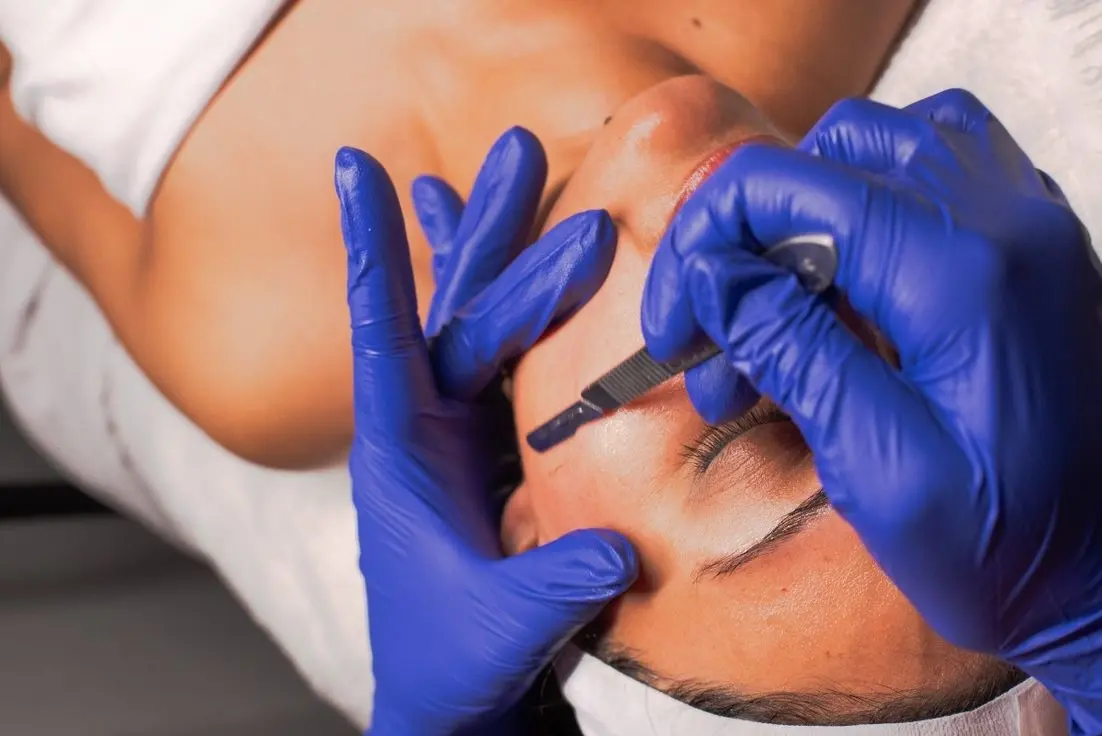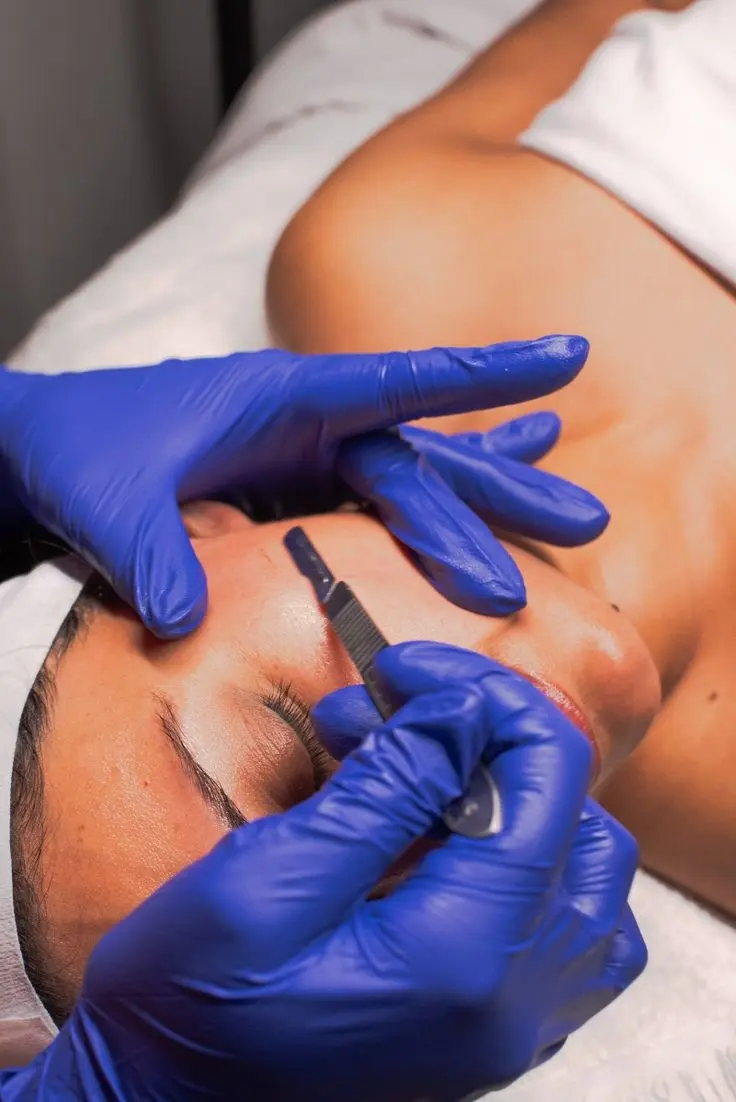How to Prepare Your Skin for an Advanced Dermaplaning Treatment
Understanding advanced dermaplaning
Advanced dermaplaning is a skincare treatment that exfoliates the skin and removes vellus hair, also known as peach fuzz. The process involves using a surgical scalpel to gently scrape off dead skin cells and hair from the skin’s surface. This treatment helps to improve the skin’s texture and appearance by promoting cell turnover and enhancing the effectiveness of skincare products. Dermaplaning is suitable for most skin types, but those with active acne should avoid it to prevent irritation and potential scarring.
Benefits of advanced dermaplaning
Advanced dermaplaning offers numerous benefits for your skin. The treatment helps to remove dead skin cells, peach fuzz, and built-up debris from your skin’s surface, leaving your complexion smoother and more radiant. By exfoliating the outermost layer of skin, dermaplaning can improve the effectiveness of skincare products, promote better makeup application, and enhance overall skin texture. Additionally, this process can stimulate cell turnover, boost collagen production, and reduce the appearance of fine lines and wrinkles. Overall, advanced dermaplaning can leave your skin looking more youthful, vibrant, and rejuvenated.
Is advanced dermaplaning suitable for all skin types?
Advanced dermaplaning is generally safe for all skin types but may not be suitable for individuals with active acne or skin conditions. It is important to consult with a skincare professional before proceeding with the treatment to ensure it is appropriate for your skin type. Dermaplaning can help improve skin texture and tone and is a popular choice for exfoliation and removing peach fuzz from the face.
Preparing your skin for an advanced dermaplaning treatment
To prepare your skin for an advanced dermaplaning treatment, start by avoiding any exfoliating products or treatments for at least a week beforehand. This includes scrubs, acids, and retinoids. It’s important to let your skin’s natural barrier function remain undisturbed to minimize potential irritation. Additionally, make sure to cleanse your face thoroughly before the treatment to remove any makeup, dirt, or oil that may be present on your skin. This will help the dermaplaning process go smoothly and effectively.
What to expect during an advanced dermaplaning session
During an advanced dermaplaning session, your skin will be cleansed and prepped for the treatment. A sterile surgical scalpel will be used to gently exfoliate the surface of your skin, removing dead skin cells and peach fuzz. You may feel a light scraping sensation, but it should not be painful. After the treatment, your skin will feel smoother and look more radiant. It’s normal to experience some redness or tingling post-treatment, but this should subside quickly. Be sure to follow your skincare provider’s post-care instructions for the best results.
Post-treatment care and maintenance tips
After your advanced dermaplaning treatment, it’s crucial to follow these care and maintenance tips:
- Avoid direct sunlight for at least 24 hours to prevent skin irritation.
- Use a gentle cleanser and moisturizer to keep your skin hydrated.
- Do not exfoliate for the next week to allow your skin to heal properly.
- Stay well-hydrated by drinking plenty of water to promote skin healing.
- Avoid makeup for the next 24 hours to let your skin breathe and recover.
By following these post-treatment tips, you can maintain the benefits of your advanced dermaplaning treatment and ensure your skin stays healthy and glowing.
Possible side effects and how to manage them
Side effects from dermaplaning are usually minor and temporary. The most common ones include redness, temporary sensitivity, and potential breakouts. To manage these effects, keep your skin hydrated, apply a gentle moisturizer, avoid harsh products, and protect your skin from the sun by using sunscreen. If you experience any severe side effects or prolonged irritation, it’s best to consult with your dermatologist for further guidance.
Frequently asked questions about advanced dermaplaning
Advanced dermaplaning is a safe and effective procedure to improve your skin’s texture and appearance. Here are some common questions people ask about advanced dermaplaning:
- Is advanced dermaplaning painful? No, the procedure is generally painless and well-tolerated.
- How often should I get advanced dermaplaning? It is recommended to get the treatment every 4 to 6 weeks for best results.
- Can I wear makeup after advanced dermaplaning? It is advisable to wait a day before applying makeup to avoid irritation.
- Are there any side effects of advanced dermaplaning? Some people may experience minor redness or sensitivity, but these usually subside quickly.
- How long does the procedure take? Advanced dermaplaning typically takes around 30 minutes to an hour, depending on the areas being treated.
- Is advanced dermaplaning suitable for all skin types? Yes, the procedure is safe for all skin types, but it’s best to consult with a professional for personalized advice.
Comparing advanced dermaplaning with other skincare treatments
Advanced dermaplaning is a skincare treatment that involves exfoliating the skin while removing peach fuzz through a gentle scraping motion. Unlike traditional facials or chemical peels, advanced dermaplaning provides a deeper exfoliation by removing dead skin cells and unwanted facial hair. This treatment is beneficial for improving skin texture, promoting better product absorption, and enhancing the overall appearance of the skin. While facials and chemical peels target specific skin concerns, advanced dermaplaning offers a more comprehensive approach by addressing both exfoliation and hair removal in one session.
Conclusion: Achieving radiant skin with advanced dermaplaning
To achieve radiant skin with advanced dermaplaning, follow these steps for the best results: After the treatment, use a gentle cleanser to keep your skin clean and hydrated. Apply a moisturizer to lock in moisture and protect your skin. Remember to use sunscreen daily to prevent sun damage. Lastly, schedule regular dermaplaning sessions to maintain your glowing skin.


